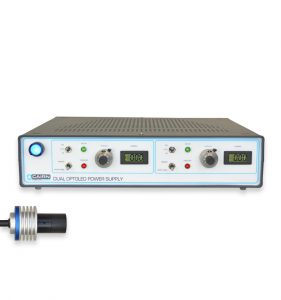OptoLED & OptoSpin allow researcher to follow and differentiate signals from 4 different fluorescently labelled proteins rapidly in living fission yeast for the first time!
Having the ability to see how the dynamic structure of different molecules and organelles are coordinated in relation to each other is providing a unique insight into the regulation of diverse cellular processes. The identification and creation of different fluorescent proteins with different spectral properties now allows the cell biologist to label multiple proteins within the same cell line and follow their distribution within a living cell. However there are biological and optical challenges that need to be overcome first. The functionality of each fluorescently labelled protein must be determined separately and in combination to ensure they have minimal impact upon normal cell physiology. Also the microscopist needs to cope with the challenge of separating the specific signals from different fluorescent proteins (different emission properties) within the cell while keeping image capturing times to a minimum.
Karen Baker, a Cairn Research sponsored BBSRC-CASE PhD student at the University of Kent has overcome these challenges during her project and for the first time is now able to follow and differentiate signals from 4 different fluorescently labelled proteins in living fission yeast with sub second temporal resolution (that is less than a second to capture 21 individual z plane images at each of the four wavelengths!). To do this she used a combination of Cairn OptoLeds to precisely control the illumination intensity of each fluorophore with sub-microsecond switching times, in combination with Cairn’s Optospin high-speed emission filter wheel (as well as careful filter selection).
These series of experiments allow Karen to follow the distribution of 4 discrete organelles with key roles in cell division (Mitotic Spindle (magenta); Spindle Poles (yellow); Polarisome (green); and Cytokinetic Actomyoin Ring (cyan)) and determining differences in their relative distributions and dynamics in normal and mutant cells allows a unique insight into the mechanisms which underlie diverse disease states.





